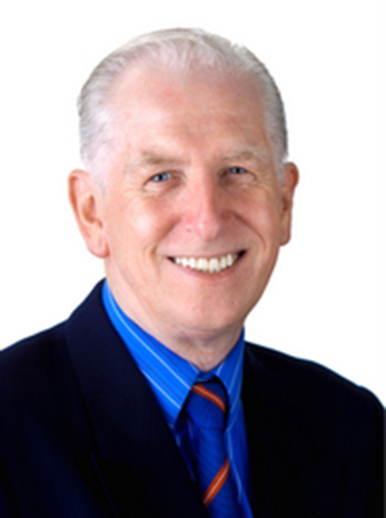By Dr Charles Margerison
Psychologist
 How do our thoughts link to our achievements?
How do our thoughts link to our achievements?
In particular, how did people who are regarded as outstanding achievers move between critical and constructive thinking to gain results?
Those are questions that I focussed on while studying the lives of over 500 amazing people. This article provides ways and means by which we can help learners and ourselves to improve performance, by using both critical and constructive thinking at the right time.
The first thing to note is that amazing people focussed initially on the process rather than the method of thinking. This means they adopted what I call the ‘can do spirit’ approach in their thinking and in their behaviour. They kept on going despite difficulties.
For the purpose of understanding how amazing people gained results, I have used the following definitions:
• Galileo looked upwards and questioned if our Earth was the centre of the Universe, as declared by the Roman Catholic Church.
• Harriet Tubman, who had been a slave for 29 years, critically assessed her situation and started to look for a better option.
• Christopher Columbus was told the Earth was flat, and that he and his crew would fall into an abyss, but in 1492 he challenged the assumption.
• Michael Faraday had little formal education, but became the leading technology scientist of the 1830s through his breakthroughs in electromagnetic technology, by applying constructive thinking in practical ways.
• Elizabeth Blackwell, despite being rejected by numerous medical colleges because of her gender, eventually qualified and became the first qualified medical practitioner in the USA and England, not just by studying, but by constructively redefining the female role as a medical practitioner..
• Joseph and Jacques Montgolfier went against conventional thought that a heavier than air flight was not possible and proved it in 1783, by developing their hot air balloon that succeeded.
• Percy Lavon Julian came from a poor African American family to qualify with a doctoral degree in chemistry, and his constructive thoughts showed how soya beans could revolutionise medical practice, as well make major contributions to fire control, business, and military applications in the 2nd World War.
These and other innovators used constructive thinking. Their starting point was to criticise the status quo. However, they went beyond critics and thought proactive constructive thoughts. Rather than staying with the critical mindset, they thought of alternatives, and ways to achieve their purpose. That is what we need to encourage in students.
 We need to enhance the language in schools. In addition to having ‘critical thinking’ on the curriculum, we also need ‘constructive thinking.’
We need to enhance the language in schools. In addition to having ‘critical thinking’ on the curriculum, we also need ‘constructive thinking.’
It is not just a matter of changing terminology. It has to be a skill that students develop, just like you develop the skill of playing a piano or playing football. It needs to be part of interpersonal communication classes. Conversations can encourage or deflate. Discussions can defuse or infuse student energy.
Therefore, when a student puts forward an idea, we can train other students to explore and support by asking. ‘how will that work?’.
As a start point, consider the kind of thinking that you hear in problem solving discussions?
Critical thinkers will raise questions or concerns. They may have good reasons, so listen to them. They may want to show how clever they are in finding holes in your logic. They may have more of a pessimistic approach. However, if used well, their questions or concerns can be the basis for a new approach.
Constructive thinkers will challenge the status quo. They will be more diverging rather than converging in their thinking. They will look for different ways and means of making things work. One way to develop constructive thought is to help students think in terms of probabilities. All ideas are on a scale of 0 to 100. The aim of the constructive thinker is to move the idea to a higher level of probability, through discussion and experimentation.
In my research on work processes used by amazing achievers, it is clear that both critical and constructive thinking led to the breakthroughs. Their thoughts challenged the status quo. In that sense, they were critical of the existing approach. However, that was not sufficient, as they moved to constructive thought to develop and test new approaches.
Here are examples of people who started by being critical and became constructive despite dissenters:-
• Dr Louis Pasteur, in France, looked at micro-organisms, and suggested they could be the carriers of disease. Despite opposition to this constructive idea, he was proved correct.
• Florence Nightingale challenged doctors and military officers to show them that skilled nurses could save the lives of those injured in battle.
• Dr Barry Marshall, in Australia, challenged the conventional views on the treatment of stomach ulcer diagnosis, by drinking a broth concoction to show bacteria was the cause.
 These, and others who have made breakthroughs, did so by both critical and constructive thinking. In particular, they encouraged their teams to problem solve in a mutually supportive way. They showed that critical perception needs to be supported by constructive applications. The skill is to bring together people who can be both critical and constructive. That requires someone who has the interpersonal skills of a coordinator.
These, and others who have made breakthroughs, did so by both critical and constructive thinking. In particular, they encouraged their teams to problem solve in a mutually supportive way. They showed that critical perception needs to be supported by constructive applications. The skill is to bring together people who can be both critical and constructive. That requires someone who has the interpersonal skills of a coordinator.
Amazing People Schools is providing students with exemplars of both critical and constructive thought via www.amazingpeopleschools.com
Here, students can find how amazing people made breakthroughs in science, engineering, medicine, music, architecture, business and other major areas.
By understanding the critical and constructive work processes of amazing achievers, students can gain the confidence and skills to do likewise.
Thanks to my colleague Marion Andersson for her proactive and positive thinking while editing this paper, which has helped me develop a more balanced approach to both critical and constructive thinking approaches.

Dr Charles Margerison, President and founder of Amazing People Worldwide, is a Psychologist. He is also President of Amazing People Schools. Dr Margerison has consulted widely for major organizations in the fields of organizational and educational psychology. He was previously Professor of Management at Cranfield University, UK, and the University of Queensland, Australia. He founded Amazing People Worldwide in 2006 and is supported by a dedicated global team. He previously co-founded Emerald Publications, and Team Management Systems and has authored more than 30 books. Dr Charles is also the creator of ‘Can Do Kids Worldwide, a virtual music group that helps students to learn about countries and cultures through music. He has also developed Imagineland, for early learners. You can follow him on Linked in .
For more information, please email info@amazingpeopleworldwide.com
Websites:



Copyright © 2021. Amazing People Worldwide.
All Rights Reserved.
This site is protected by reCAPTCHA and the Google
Privacy Policy and Terms of Service apply.



